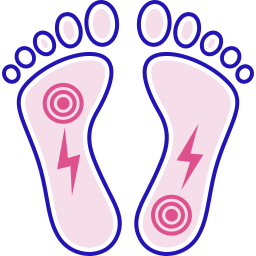Repeatedly performing certain motions can produce pain and dysfunction over time
Most injuries will fall into one of two categories: acute and overuse. Acute injuries usually result from a single, traumatic event, such as a fall, slip, or collision with another athlete or object. Some common examples of acute injuries include wrist fractures, ankle sprains, shoulder dislocations, and hamstring strains.
Overuse injuries, on the other hand, occur gradually over time rather than on the spot. They are more common than acute injuries but are also more subtle, which makes them more challenging to diagnose and treat. Overuse injuries may result from training too hard and pushing your body past its limits, or simply by moving incorrectly or with bad posture on a repeated basis. Another term used is repetitive strain injuries, which shows how repeating the same movements can result in small trauma—or microtrauma—to tendons, bones and joints. Eventually, the damage gets so bad that symptoms begin to arise, in which cases treatment is usually needed.
Here at our practice, we treat a variety of sprains & strains. Below, we offer a brief overview of the mechanisms responsible for 5 common overuse injuries:

Shoulder Impingement – Consider Physical Therapy for Shoulder Impingement Syndrome in Visalia
Shoulder impingement syndrome (SIS) is a condition that involves the rotator cuff, a group of muscles and tendons that keeps the shoulder stable. In SIS, rotator cuff tendons become compressed—or “impinged”—as they pass through a small bone on top off the shoulder blade called the acromion. Over time, this causes the tendons to become irritated and inflamed, and will lead to bothersome symptoms like swelling and tenderness, loss of strength, restricted movement and pain that occurs at rest, when moving the shoulder overhead and/or when sleeping.
SIS is most common in individuals that regularly perform lots of overhead activities like golfers, swimmers, and baseball and tennis players, as well as painters and construction workers. The condition can also result from an injury that compresses the structures of the shoulder—like a fall—or from frequently sleeping on your side. Sleeping in this position regularly can strain the shoulder and cause impingement over time.

Plantar Fasciitis – We Provide Effective Physical Therapy for Plantar Fasciitis in Visalia
The plantar fascia is a thick, connective band of tissue that runs across the bottom of the foot and connects the heel to the toes. It’s a tough structure designed to absorb the regular stresses that are placed on the foot, but can become damaged when these forces are excessive. When this occurs, the resulting condition is plantar fasciitis.
Plantar fasciitis is a stubborn overuse injury and the most common cause of heel pain.
It occurs most frequently in runners—especially long-distance runners—due to the repetitive strain they place on their feet. People who have flat feet or high arches, are overweight or regularly perform any other weight-bearing activity are also at increased risk. The most common symptom of plantar fasciitis is a stabbing pain near the heel that’s most noticeable upon waking up and after standing for long periods.

Carpal Tunnel Syndrome – Relief for Those Searching for Physical Therapy for Carpal Tunnel Syndrome in Visalia
The carpal tunnel is a space at the base of the palm that contains several tendons and the median nerve, which provides sensation to the fingers. If these tendons thicken or any other swelling occurs in the area, this tunnel narrows, which puts pressure on the median nerve and leads to a condition called carpal tunnel syndrome.
Carpal tunnel syndrome is extremely common, as it affects about 5% of the population.
The greatest risk factor is any task that requires repetitive hand motion, awkward hand positions, strong gripping, mechanical stress on the palms, or vibration. As a result, individuals who work on an assembly line—like manufacturing and meatpacking industries—are at the highest risk. The risk if also high in office workers. Symptoms usually start with a burning or tingling sensation, but eventually pain, weakness and/or numbness develop in the hand and wrist, and then radiate up the arm.

Golfers Elbow – Choose Physical Therapy for Golfer’s Elbow in Visalia
Golfer’s elbow is a condition that results from the repeated bending of the wrist that is necessary in a golf swing. This damages the muscles and tendons of the medial epicondyle—a piece of bone on the inside of the elbow that allows the forearm, wrist and hand to bend and move in several different ways—and eventually leads to inflammation. It is especially common in golfers because gripping or swinging clubs incorrectly or with too much force can take a toll on the structures within the elbow over time.
Common symptoms include pain, tenderness, swelling, weakened grip strength and a burning sensation on either the inside or outside of the elbow. These symptoms often develop gradually and are worsened by activities that involve the forearm, and if left unchecked, can go on to make many basic activities that require gripping or grasping a major challenge.

Lower Back Pain – Natural Physical Therapy for Back Muscle Strain in Visalia
Back pain is the most common musculoskeletal injury, and a significant number of cases are due to a strain of one or more back muscles. This condition—also known as a pulled muscle—is the result of muscle fibers tearing from being overstretched or overused, which can occur from repeatedly bending your back or using improper posture.
The most common symptom is pain in the lower back that is often most intense during the first few hours of the day. Pain also tends to get exacerbated with certain movements or positions that strain the muscles of the spine, like standing for long periods of time. Tenderness and stiffness of the spine is also likely.
Physical therapy for all types of overuse injuries
In addition to being the product of overuse or repetitive strain, another feature that all of these conditions share in common is responding to physical therapy. Our physical therapists can help by identifying the behaviors or habits that are responsible for your pain, and then recommending adjustments to your movements along with a personalized treatment program to help you move with less pain.
